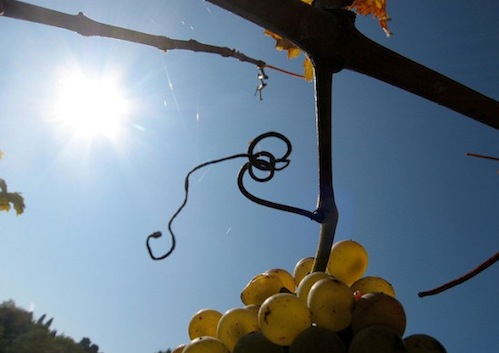Just when you though wine couldn’t get any more serious, along comes biodynamic vineyard that cultivates crops in accordance with the cycles of nature, and uses plants and animals to take the place of chemicals and fertilizers.
Mike Benziger of Benziger Sonoma Mountain Estate puts it this way: We look to nature for answers, not to men. We identify plants, bacteria and animals that live in a vineyard. We won’t necessarily try to change them, but farm in a way to make them synergize with each other and form an environment that is completely unique. This creates farm individuality and distinction on a piece of property and translates that individuality into the wines.
The principles and practices of biodynamics are based on his spiritual/practical philosophy, called anthroposophy, which includes understanding the ecological, the energetic, and the spiritual in nature. This type of viticulture views the farm as a cohesive, interconnected living system.
Sounds like a lot of work to us, but the end product is devine, so we are thankful for the brains, heart and soul that go into this fairly new wine cult(ure). And the practice is mysteriously (or not so mysteriously to those who understand it) are returning once badly diseased vineyards to prize-winning ones.
For a vineyard to be considered biodynamic the wine-grower must use the nine biodynamic preparations, as described in 1924 by Rudolf Steiner. These are made from cow manure, quartz (silica) and seven medicinal plants. We almost just provided a link to the Big 9, but found them interesting enough to long-hand here. Maybe you’ll agree:
- Preparation 500 – Cow manure is buried in cow horns in the soil over winter. The horn is then dug up and its contents (called horn manure or ‘500’) stirred in water and sprayed on the soil in the afternoon. The horn may be re-used as a sheath.
- Preparation 501 – Ground quartz is buried in cow horns in the soil over summer. The horn is then dug up, its contents (called horn silica or ‘501’) stirred in water and sprayed over the vines at daybreak. The horn may be re-used as a sheath.
- Preparation 502 – Yarrow flowers are buried sheathed in a stag’s bladder. This is hung in the summer sun, buried over winter, then dug up the following spring. The bladder’s contents are removed and inserted in the compost (the used bladder is discarded).
- Preparation 503 – Chamomille, the German chamomile (Matricaria chamomila) flowers are sheathed in a cow intestine. This is hung in the summer sun, buried over winter, then dug up the following spring. The intestine’s contents are removed and inserted in the compost (the used intestine is discarded).
- Preparation 504 – Stinging nettles are buried in the soil (with no animal sheath) in summer, are dug up the following autumn and are inserted in the compost.
- Preparation 505 – Oak bark is buried sheathed in the skull of a farm animal, the skull is buried in a watery environment over winter, then dug up. The skull’s contents are removed and inserted in the compost (the used skull is discarded).
- Preparation 506 – Dandelion flowers are buried sheathed in a cow mesentery (peritoneum). This is hung in the summer sun, buried over winter, then dug up the following spring. The mesentery’s contents are removed and inserted in the compost (the used mesentery is discarded).
- Preparation 507 – Valerian flower juice is sprayed over and/or inserted into the compost.
- Preparation 508 – Common Horsetail (Equisetum arvense) made either as a fresh tea or as a fermented liquid manure is applied either to the vines (in this case usually as a tea) or to the soil (in this case usually as a liquid manure).
The thing about wine is that there are endless reasons to appreciate it. Add Biodynamics to the list, and it raises wine to a yet another, even higher level.


